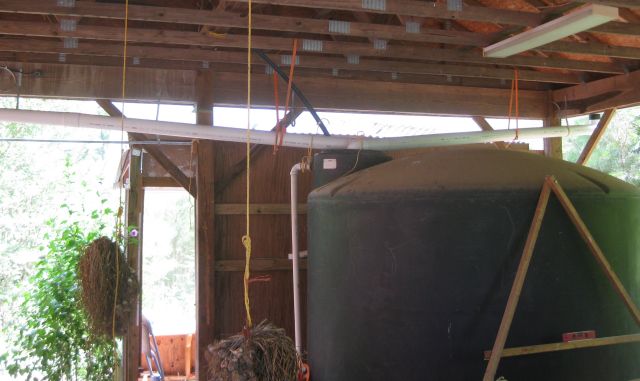My rainwater harvesting system (elsewhere described) includes a 2,500 gal storage tank which takes water from the carport roof. Rain has been sparse but on Saturday we had a short heavy deluge and I noticed that both gutters which feed the tank were overflowing. I was surprised since a month previously I had connected a hose to the gutters and each had drained into the storage tank.
The drawback with testing for a blockage with a hose is if a pipe is partly blocked the water will still flow and seem ok but that slower flow cannot accommodate a heavy downpour. The reason for my recurring pipe blockages is poor design and so even if the pipes are clear, the gusts which precede a storm can dump leaves on the roof which will clog a weak system.
As you can see below I capture water in a 4″elbow positioned below the gutter downspout and then reduce the flow to a 2″ pipe which runs to the storage tank.
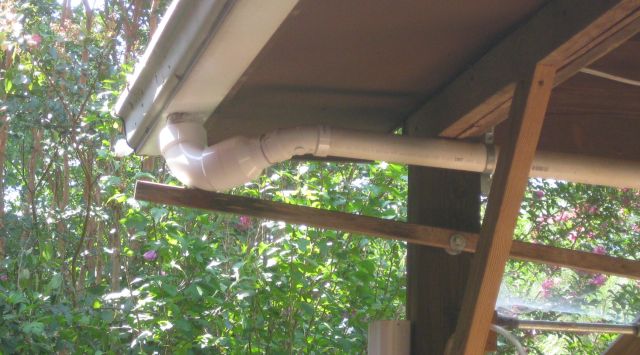
The old design had the two 2″ pipes connecting to expansion joints connected to a 4″ T connection which fed into the top of the storage tank.
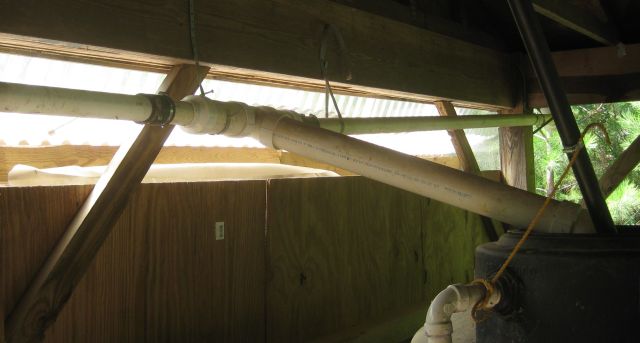
I cannot recall why I used such a convoluted design. Perhaps I had surplus 2″ pipe though the cost of the expansion joints should have been offputting. Perhaps the thought of using heavy thick wall 4″ pipe was a deterrent. Today I resolved to fix the problem and as I considered my options I decided to keep it as simple as possible. Why not use thin wall 4″ pipe and run it from the downspout directly to the storage tank. This would eliminate the need for 45 degree connectors and a T joint and direct the water to the shortest route with a continuous down slope to the tank instead of a horizontal run to the T connection and then the down slope to the tank. Keep it simple stupid!
So here is the new connection in place of the connection first shown.
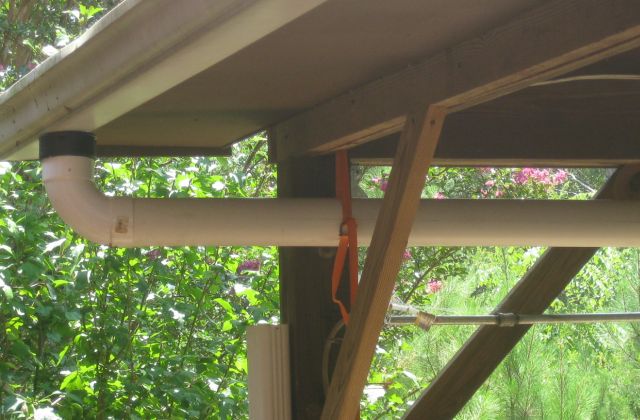
And below is the connection of the 4″ pipes to the storage tank – a straight run with a 90 deg elbow at the end to dump the contents into the mesh filter at the top of the tank. Since the pipes can be raised vertically it should be easy to remove and clear the mesh basket, when needed.
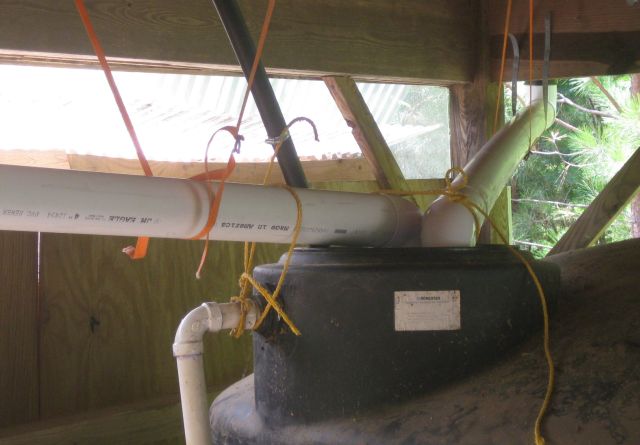
This is the design I should have used at the outset, the cost of the new design is less than the old design and I am hoping for no future blockages. And why didn’t I think of this at the outset. I wanted the weight of the water and the pipes on the wall rather than the rafters and aesthetically it looked less intrusive, plus I didn’t have the experience of recurring blockages and knowing how to keep things simple.

